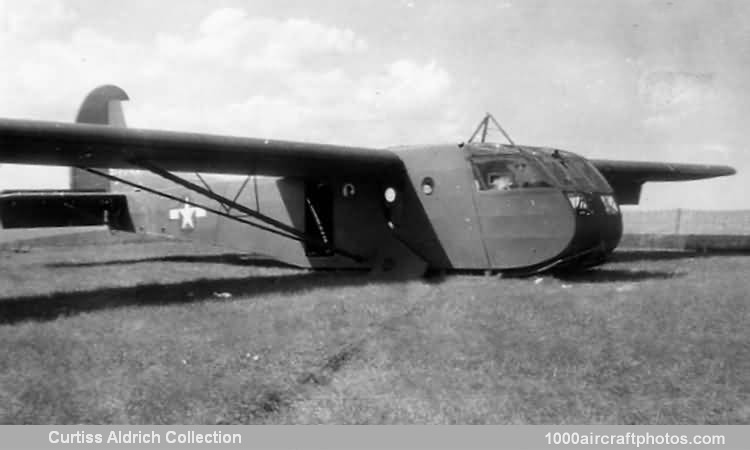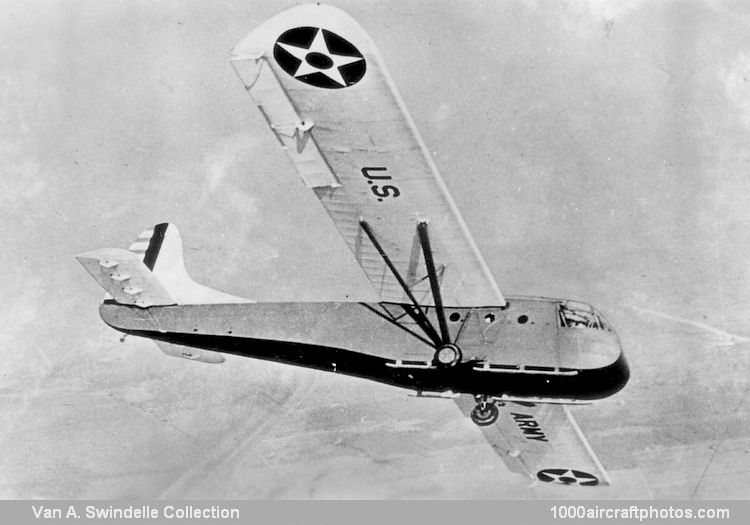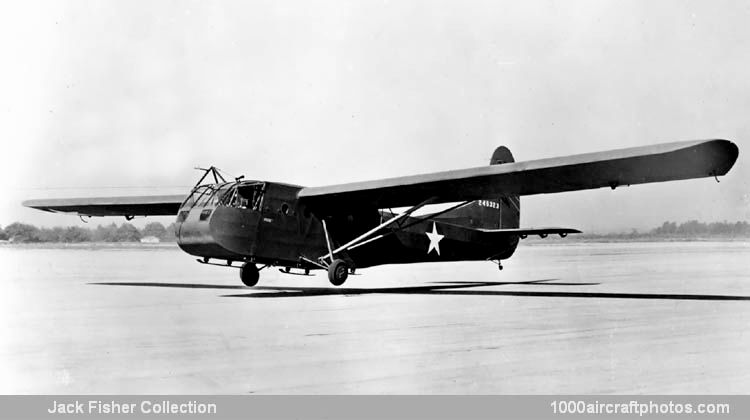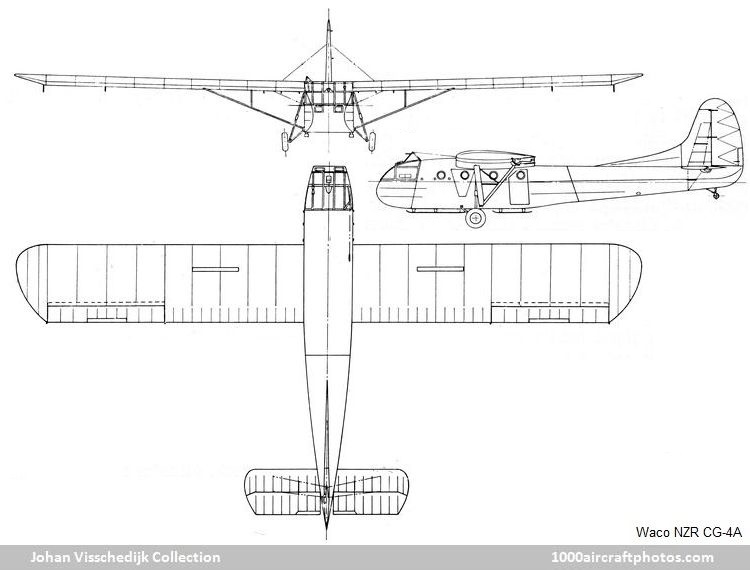10/31/2023. Remarks by
Johan Visschedijk: "The US Army development of troop-carrying gliders began in 1941, with experimental contracts for a series of prototypes to meet two separate specifications. The first requirement was for an eight to nine seat transport, and contracts were placed for single prototypes of the Frankfort Model TCC-41 as the XCG-1 (s/n 41-29615); the Waco NYQ-3 as XCG-3 (41-29617); the St. Louis XCG-5 (41-29619) and the Bowlus XCG-7 (41-29621).
Waco XCG-4 (41-29618) (
Van Swindelle Collection)
The second type was to be a larger, fifteen-seat glider, and the same four companies each received contracts for a single prototype: Frankfort TCC-21 as XCG-2 (41-29616); Waco XCG-4 (41-29618); St. Louis XCG-6 (41-29620) and the Bowlus XCG-8 (41-29622).
Of the eight prototypes ordered, all but the XCG-1, XCG-2 and XCG-6 were completed and test-flown but no further development of the St. Louis or Bowlus designs occurred, only the two Waco types reaching quantity production. The CG-3A, which was used principally for training, while the CG-4 became the first and most-widely used US troop glider of WW II. The CG-4as were towed into the war-theaters by C-46s and C-47s. In British military service it was named Hadrian.
After trials with the XCG-4 in 1942, a second prototype was ordered (42-53534) and plans were made for large scale production in which, eventually, sixteen US companies received orders for the CG-4A and delivered a total of 13,906 examples.
Cessna Aircraft, Wichita, Kansas. 750 CG-4A-CE (these were subcontracted to Boeing-Wichita):
Commonwealth Aircraft, Kansas City, Missouri. 1,470 CG-4A-CM:
Ford Motor,Willow Run, Michigan. 4,190 CG-4A-FO:
General Aircraft, Astoria, New York. 1,112 CG-4A-GE:
Gibson Refrigerator, Greenville, Michigan. 1,078 CG-4A-GN:
Gliders & Aircraft (division of Firestone), Willow Grove, Pennsylvania. 627 CG-4A-GA:
Laister-Kaufman Aircraft, St. Louis, Missouri. 310 CG-4A-LK:
National Aircraft, Elwood, Indiana. 1 CG-4A:
Northwestern Aeronautical, St. Paul, Minnesota. 1,510 CG-4A-NW:
Pratt & Read, Deep River, Connecticut. 956 CG-4A-PR:
Ridgefield, Ridgeville, New Jersey. 156 CG-4A-RI:
Robertson Aircraft, St. Louis, Missouri. 170 CG-4A-RO:
Timm Aircraft, Van Nuys, California. 434 CG-15A-TI:
Waco Aircraft, Troy, Ohio. 1,075 CG-4A-WO:
Ward Furniture, Fort Smith, Arkansas. 7 CG-4A-WA:




